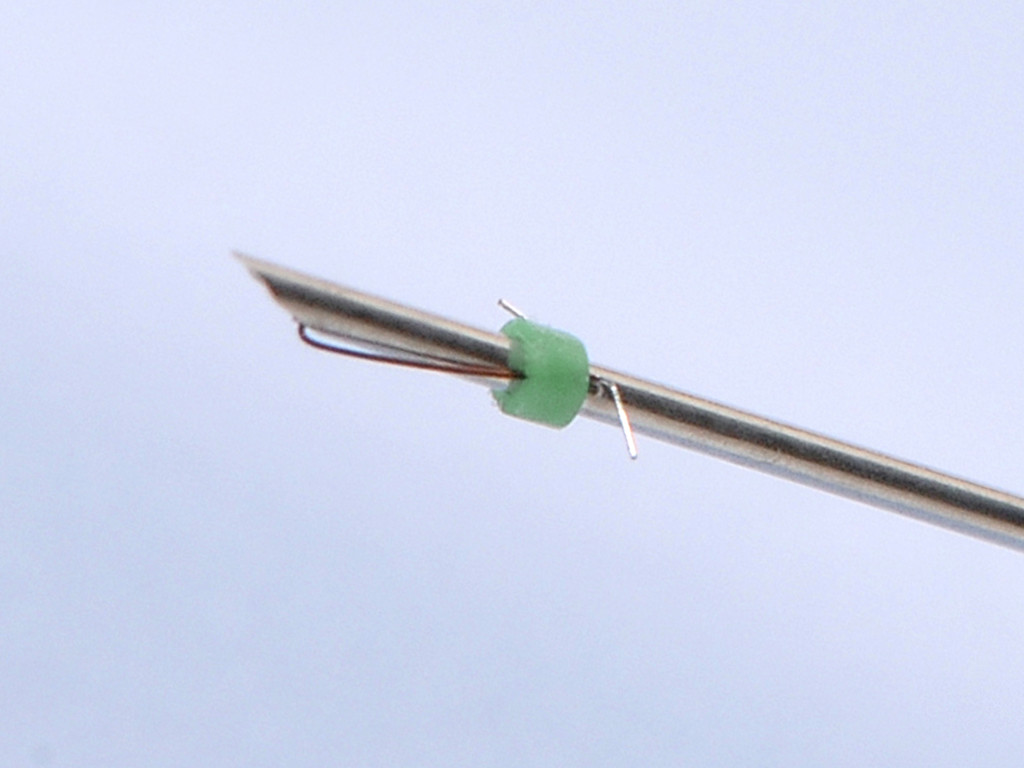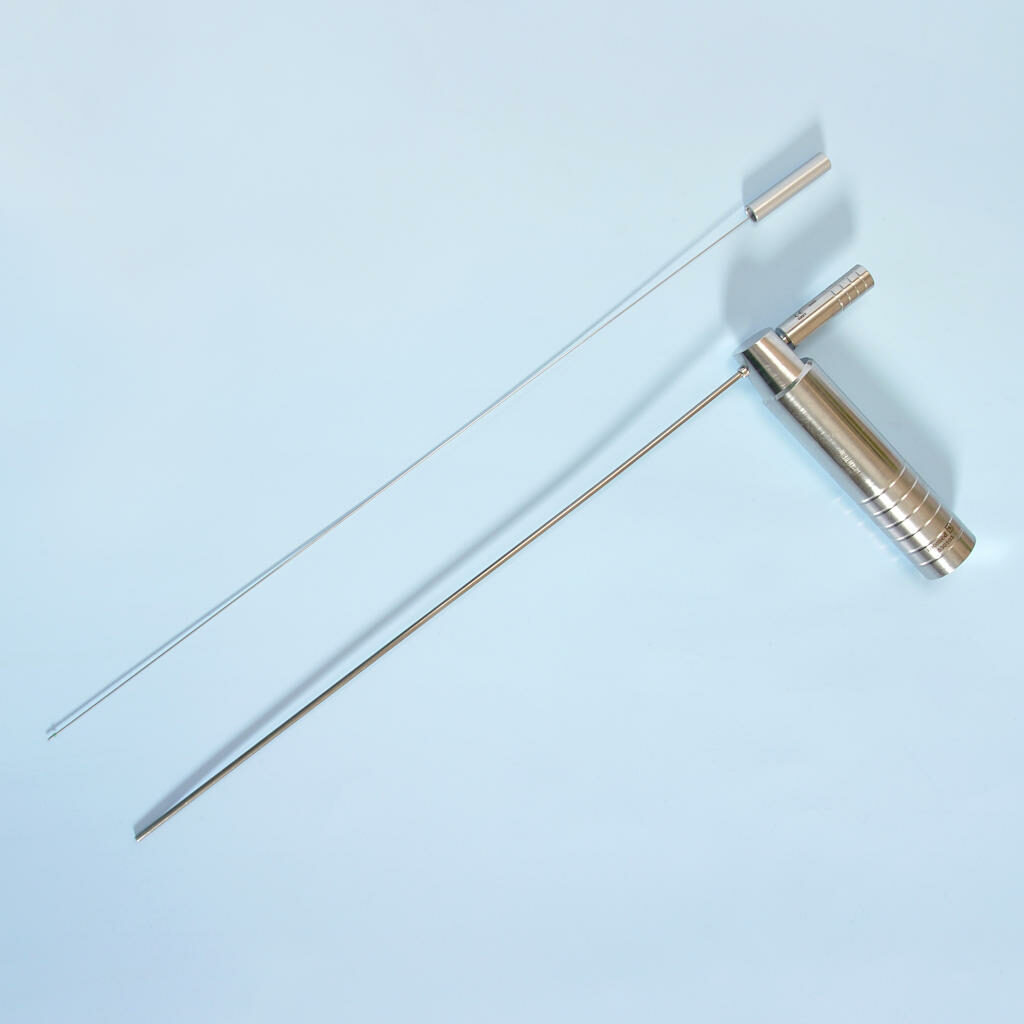
The other common type of indwelling electrodes used in LEMG is the hooked-wire electrode. This electrode consists of two separate fully isolated fine-wires (except of the hooks), each with a maximum diameter of 50 micrometers often made of platinum. They are inserted into the muscle after having been threaded through a hollow-core needle.
For reaching the larynx, a curved and a strait application tool is available, depending, if the patient is awake in a sitting position or lying during a suspension laryngoscopy.


When the needle is withdrawn, the hooks on the end of the wires act as a barb, stabilizing the position of the electrodes within the muscle. These electrodes cannot be repositioned once placed but, as they bend easily can be removed smoothly. The field of recording can vary during measurement, depending on the distance between the bared wires in the moving muscle. The advantage of hooked-wire electrodes is that they are well tolerated after correct placement, so that they can be left in place for longer periods of time than needle electrodes.
